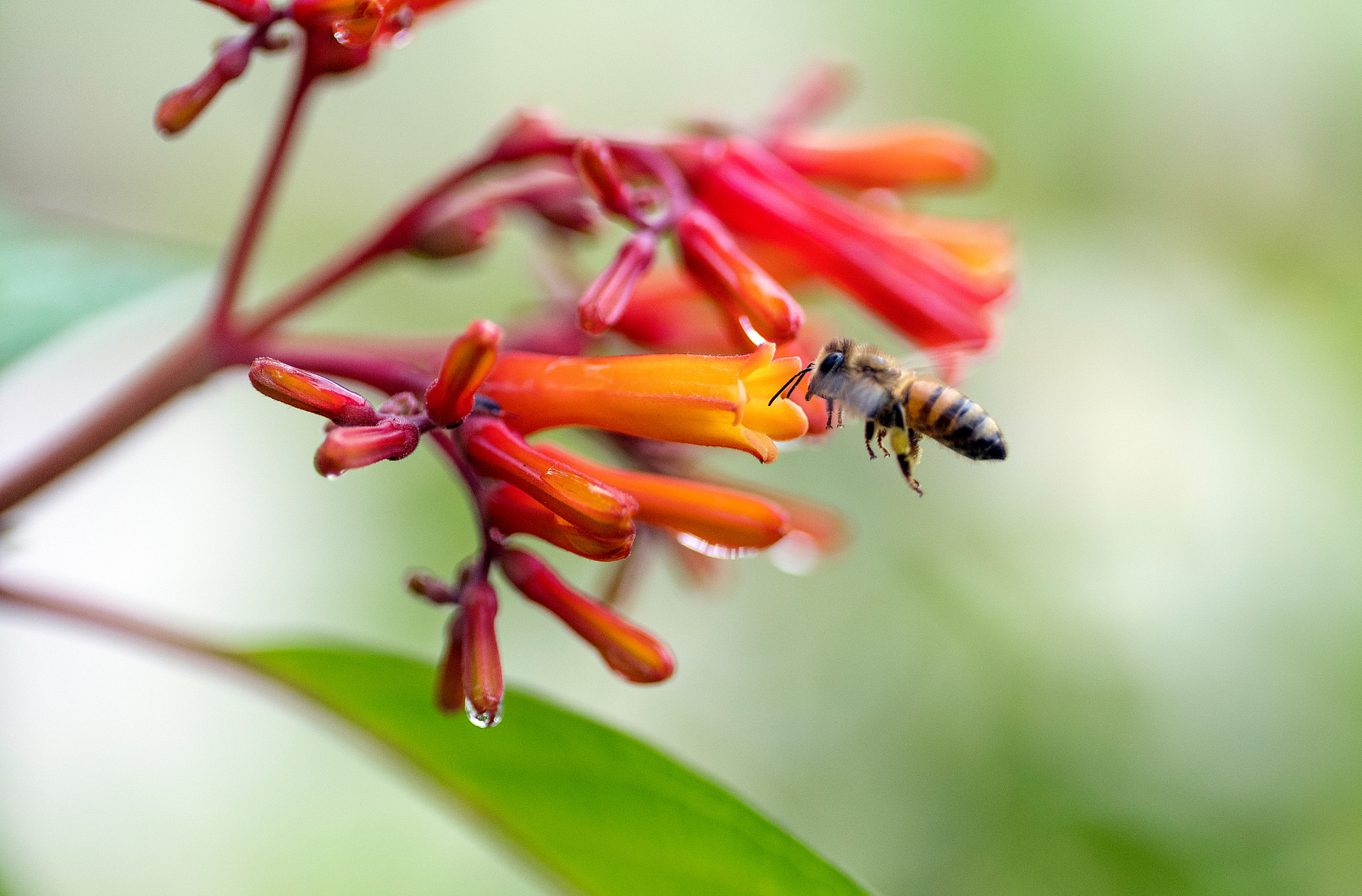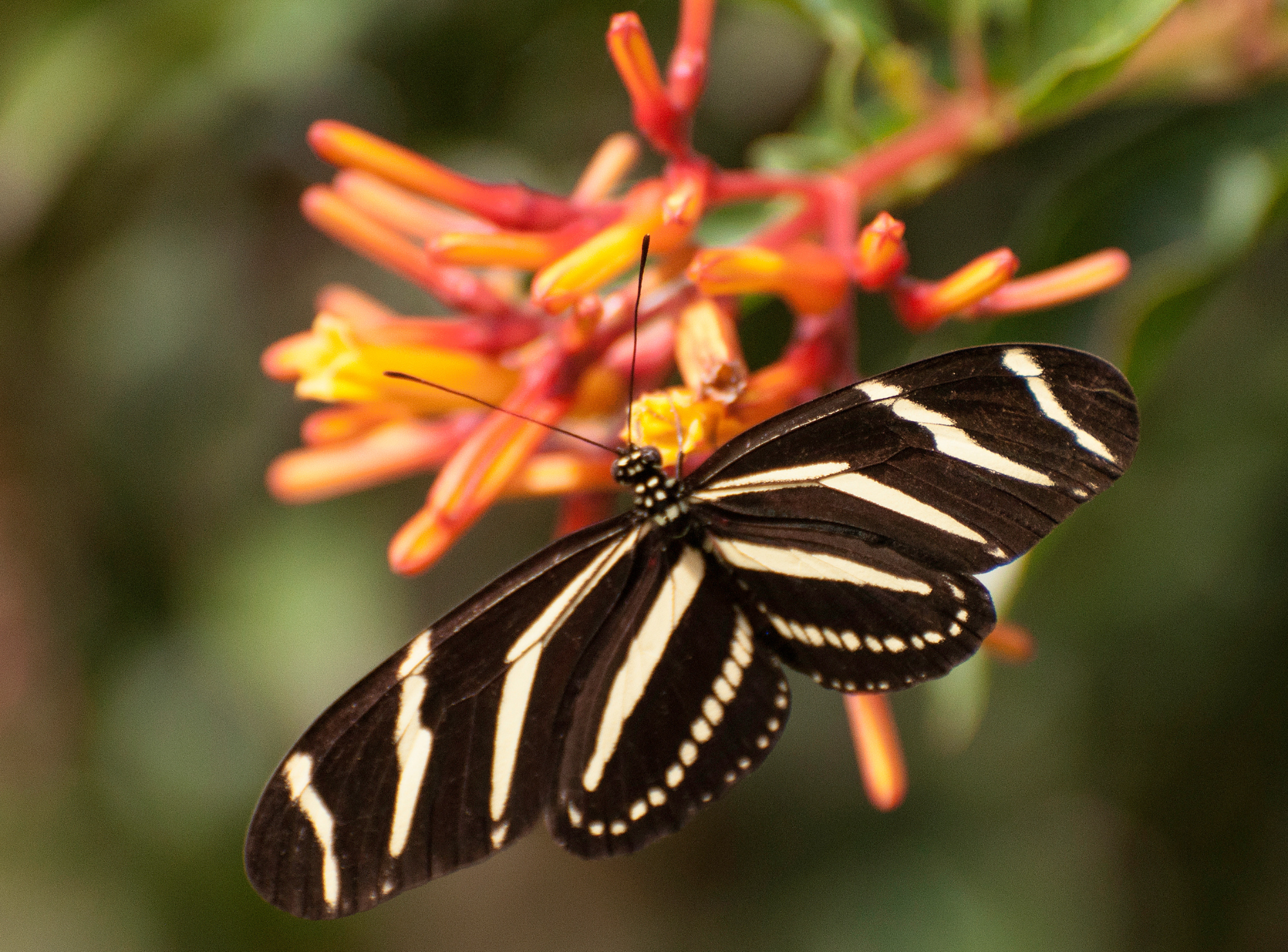Brighten Up Your Landscape by Planting a Florida Native Firebush!
Firebush Facts:
Firebush is a large, flowering shrub, which is native to Central and Southern Florida. Without support, Firebush can grow 8 to 12 feet tall, but if supported, Firebush can grow up to 20 feet tall. Firebush does prefer full sunlight, but will still tolerate shade with less flower production. Its most notable features are the bright orange - red flowers that grow annually in warmer climates. The lovely flowers are tubular and attract pollinators, so they are perfect for butterfly gardens or decorative hedges. They also produce a black, rounded, fruit that birds and small mammals like to feed on.
How to Plant:
Planting a Firebush can be a vibrant addition to any garden, or make for a beautiful hedging with proper maintenance. Here's a step-by-step guide to planting your Firebush:
Choose a Suitable Location:
Select a site with well-drained soil and full sunlight for maximum flowering. Firebush can tolerate partial shade, but will not grow as many flowers. For best results, plant in late spring or summer in USDA Zones 8-11. If planting multiple in a row, you should space the plants at least 5-6 feet apart, and away from the house by at least 4 feet. This is because Firebush can grow 8-12 feet tall on average.
Dig a Proper Hole:
Dig a hole slightly larger than the Firebush’s root ball and gently place the plant into the hole to ensure the top of the root ball sits level with the ground around it.
Prepare the Firebush:
Take the plant back out from the hole to extract it from the container. Remove the Firebush from its container and gently loosen any circling roots. Trim any damaged or excessively long roots.
Planting the Firebush:
Position the Firebush in the center of the hole, ensuring that the top of the root ball is level with the surrounding ground.
Backfill the Hole:
Fill the hole with soil, pressing firmly to remove any air pockets. Water the newly planted Firebush thoroughly with approximately 1 to 2 inches of water, depending on the weather and soil's moisture level. This helps settle the soil and provides essential hydration to the roots.
Maintenance:
Be sure to monitor the Firebush regularly and water as needed to keep the soil evenly moist, especially during the tree's first year of growth, to promote healthy establishment. If being used as hedging or to maintain a shape, Firebush will need pruning regularly. Be careful of over pruning, as it may stunt flower growth.
Plant Care:
With a bit of proper attention and care, Firebush will thrive in a fully sunlit environment with moist, well-drained soil. Regular watering is recommended, ensuring that the soil remains consistently moist, but not waterlogged. Firebush is moderately drought tolerant, so this is important at least until the plant is well established. If you’d like the Firebush to maintain shape, or for use as hedging, pruning is required as it will grow heartily. Be cautious of over pruning, which could stunt the growth of flowers. Firebush is rather pest resistant and has no serious pest issues. It is also fairly weather resistant, and will flower year round, unless exposed to a freeze. If Firebush does die back due to a freeze, it will likely grow back when conditions become optimal. By following these planting and care guidelines, you can enjoy the beauty and benefits of Firebush for years to come. Attractive to pollinators and wildlife, Firebush is a beautiful plant to consider adding to your garden or landscaping!
Pollinator and Wildlife Friendly:
Due to its bright, orange-red flowers and round, black fruit, Firebush is a popular plant for wildlife. The flowers are tubular, and about 1 and a half inches in length, so they are great for pollinators that probe for nectar - like butterflies and hummingbirds! The fruits, which begin red and turn to a black, fleshy fruit once mature, are also perfect for birds and small mammals to feed on. Because of these features, Firebush is ideal for anyone looking to build a pollinator garden, or natural feeding garden for local wildlife.
Sources:
2023 USDA plant hardiness zone map. 2023 USDA Plant Hardiness Zone Map | USDA Plant Hardiness Zone Map. (n.d.). http://planthardiness.ars.usda.gov/PHZMWeb/
Gilman, E. F., Meerow, A., Klein, R. W., & Hansen, G. (2023, October 23). FPS-237/FP237: Hamelia patens firebush, Scarlet Bush. Ask IFAS - Powered by EDIS. https://edis.ifas.ufl.edu/publication/FP237
Hamelia patens. Florida Native Plant Society (FNPS). (n.d.). https://www.fnps.org/plant/hamelia-patens
U.S. Forest Service. Forest Service Shield. (n.d.). https://www.fs.usda.gov/wildflowers/pollinators/animals/butterflies.shtml




